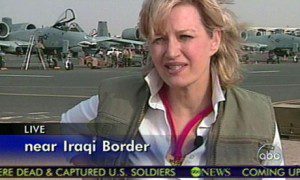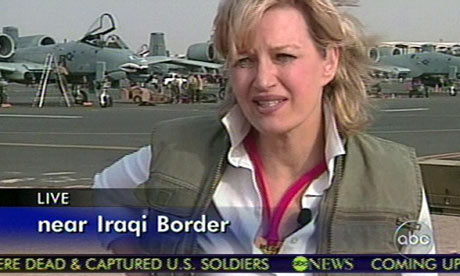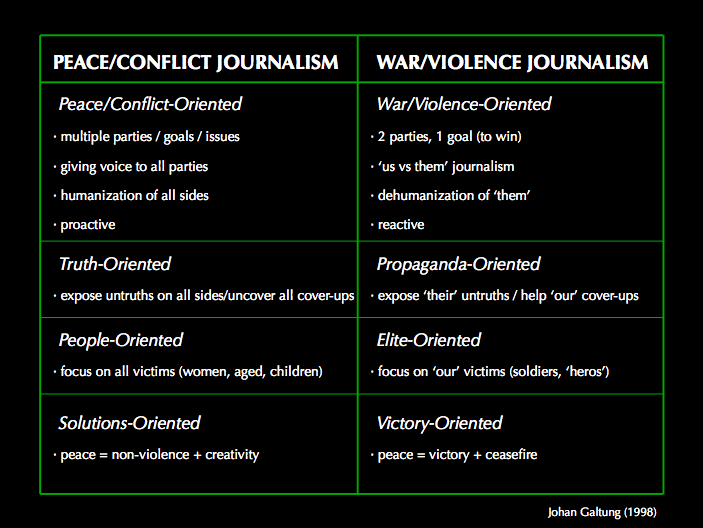 With all the hubbub about this month being the tenth anniversary of the American invasion of Iraq, we’ve heard plenty about the cost, the losses, and the problems of the ongoing violence in Iraq. There have also been a smattering of stories about how the mainstream media could (or should) have covered the lead up to the war with a bit more skepticism or journalistic ethics. But aside from a few journalists’ regretful confessionals, there hasn’t been a thorough examination of what the media’s role was in supporting the invasion by giving so much airtime (or column inches) to war-hawks while largely ignoring voices making alternative proposals (dialogue, negotiation, mediation etc.) Nor have their been any systematic approaches to an alternative reporting style that would give voices of peace fair coverage in the media.
With all the hubbub about this month being the tenth anniversary of the American invasion of Iraq, we’ve heard plenty about the cost, the losses, and the problems of the ongoing violence in Iraq. There have also been a smattering of stories about how the mainstream media could (or should) have covered the lead up to the war with a bit more skepticism or journalistic ethics. But aside from a few journalists’ regretful confessionals, there hasn’t been a thorough examination of what the media’s role was in supporting the invasion by giving so much airtime (or column inches) to war-hawks while largely ignoring voices making alternative proposals (dialogue, negotiation, mediation etc.) Nor have their been any systematic approaches to an alternative reporting style that would give voices of peace fair coverage in the media.
But a peer-reviewed article recently published in Journalism: Theory, Practice and Criticism takes a look at the reporting in the US mainstream media during the lead-up and the early years of the War in Iraq. This analysis shows how an approach rooted in peace journalism could alter the way in which such conflicts are portrayed in the media. Such a strategy can move the public discourse away from a focus on violent means, to find creative conflict transformation mechanisms that allow different voices and interests to be heard. While this article focuses on the content of journalism, rather than the structures,
We do not need to conclude that editors and reporters are mere cogs in a machine of their own making, and therefore efforts to reform journalism from within are pointless. Structural constraints govern the content of news, but they do not altogether determine it. Pressure from without and renewal from within are not mutually exclusive avenues […]; they may, indeed, be necessary counterparts. (Lynch et al., 2011: 8)
The paper goes on to offer a systematic analysis of Johan Galtung’s Peace Journalism-War Journalism table and applies it to coverage of Iraq.
A peace journalism approach would have opened up alternative ways for transcending the conflict between the United States and Iraq by bringing in more varied voices and points of view into the public conversation. This alternative is both comprehensive and viable (Lynch et al., 2011: 15) and can used for coverage of any subject journalists wish to cover. With the advent of social media and wider access to the internet giving more individuals the ability to replicate and disseminate information, some elements of peace journalism are already becoming prevalent, notably making conflicts transparent, giving voice to all parties, humanization of all sides, exposing untruths on all sides, focusing on suffering all over including on women, the aged, children and the voiceless. Given that human beings tend to want to live in peace, why not further develop the structures and cultures that support peace, including in journalism?


